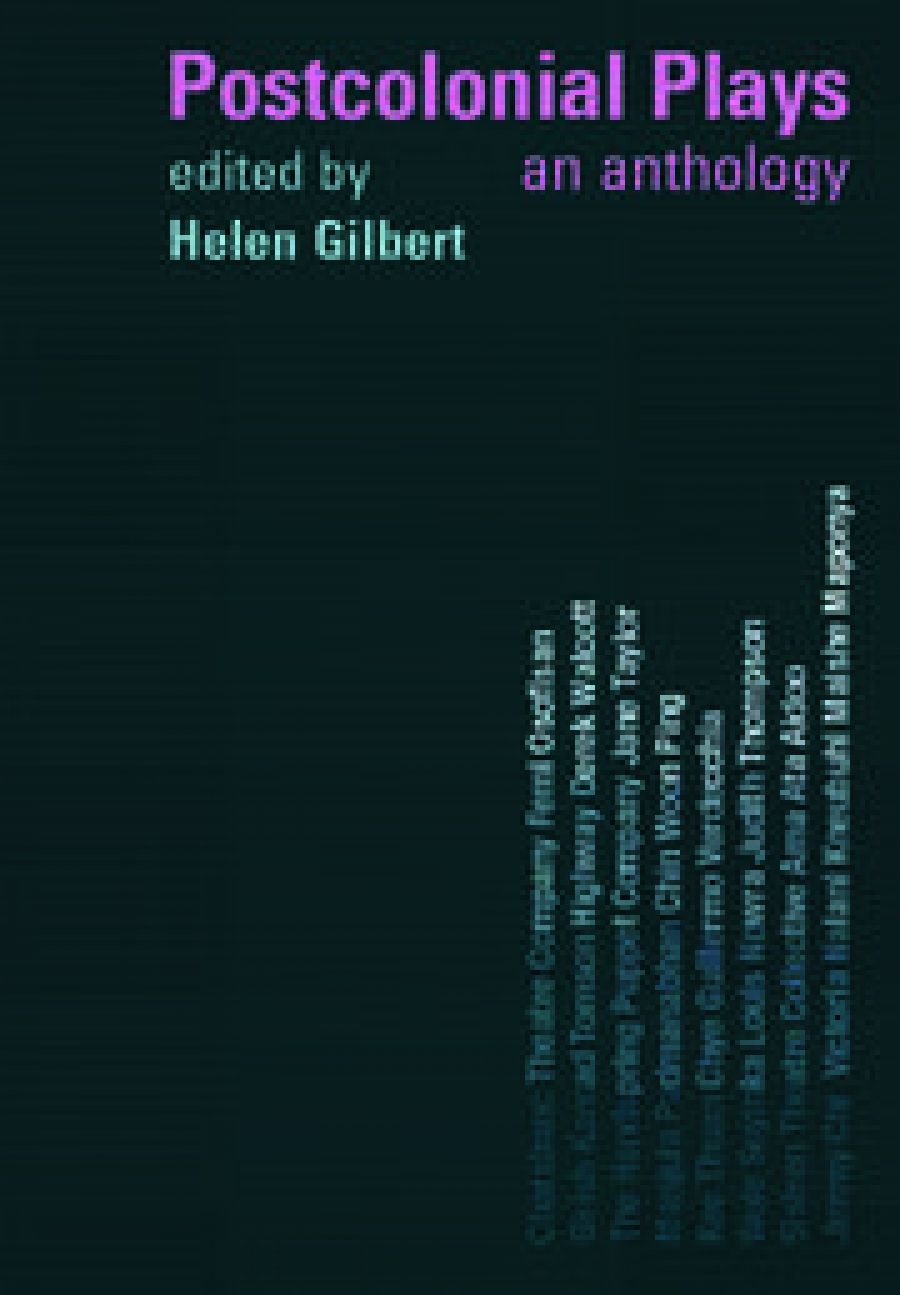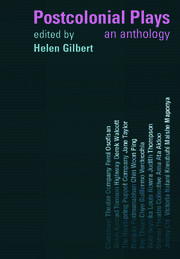
- Free Article: No
- Contents Category: Theatre
- Review Article: Yes
- Article Title: Playing the Opposition
- Online Only: No
- Custom Highlight Text:
In Neil Armfield’s recent production of Dallas Winmar’s play Aliwa – about the struggle of the Davis family in Western Australia in the 1930s to avoid becoming members of the stolen generations – the character of Aunty Dot Collard, Jack Davis’s sister, was played brilliantly by Deborah Mailman. Aunty Dot herself, flown over to Sydney’s Belvoir Street Theatre, introduced the show and then sat on the side of the stage on an old red sofa smiling benignly, and interfering occasionally, as she watched her history being performed. But which was the ‘real’ Aunty Dot was something the show left up to the audience to decide.
- Book 1 Title: Postcolonial Plays
- Book 1 Subtitle: An Anthology
- Book 1 Biblio: Routledge, $60.50pb, 469pp
- Book 1 Cover Small (400 x 600):

These ideas, of theatre as a site of post-colonial opposition, were explored in Helen Gilbert and Joanne Tompkins’s pioneering book Post-Colonial Drama (1996). They explored postcolonialism as a performance and playwriting strategy, and also promised to examine it as a reading strategy, but didn’t end up fully doing that. Gilbert’s welcome new anthology, which could be seen as a companion to the earlier book, focuses on playscripts by those post-independence writers and theatre companies from the nations of the former English empire who have consciously engaged with the discourses of imperialism by employing oppositional performance strategies. She acknowledges in her Introduction that the postcolonial project might be extended to include the rereading of old plays, but that is not part of her agenda in this book.
Postcolonial Plays is a collection of scripts intended to be studied in the social and political contexts of their original production. The plays’ introductions give careful ideological readings, and clearly identify the imperialist enemy form as ‘naturalism’, a word used to homogenise the complex and varied dramaturgical practices of the Western canon.
A problem with an anthology such as this, which Gilbert also acknowledges in her introduction, is that printed play texts, even with a lot of contextual material (which this book can offer only sparingly), are a difficult way of getting an idea of what these shows might once have meant for their original audiences. The Sistren Theatre Collective’s QPH (Jamaica, 1981) is written largely in Patwah, important for its political project in Kingston, but very difficult to read. The problem is compounded when, as with most of these plays, different imperial, local and indigenous performance traditions and conventions were used in the original shows to provide such a large part of their political point and impact.
All that said, and reading these texts as imaginatively and empathetically as one can, there is some wonderful material in this anthology. Gilbert states that she was nervous about including scripts of the Handspring Puppet Company’s Ubu and the Truth Commission (South Africa, 1997) and Jimmy Chi and Kuckles’s Bran Nue Dae (Australia, 1990) because these were such highly theatrical pieces. The Handspring Company has been here (with other shows, but we know their style) and Bran Nue Dae toured extensively, so, for at least some Australian readers, there is a point of entry to reading these bare textual traces of great theatrical events. The other Australian play is Louis Nowra’s Inside the Island (1980).
There are fine plays by other well-known writers, including Wole Soyinka’s The Strong Breed (Nigeria, 1964) and Derek Walcott’s Pantomime (Trinidad, 1978). There are scripts of solo performance pieces from Canada, Singapore and New Zealand. The best of these is Fronteros Americanos (1993) by Guillermo Verdecchia, an Argentine-Canadian who went back to his birthplace, via Mexico, and then returned to his adopted country to find that his real home was the border.
Manjula Padmanabhan’s Harvest (India, 1997) won the first Onassis Prize for Theatre, and is presumably included for that reason. It is a strongly imagined, but conventionally staged, dystopian sci-fi drama about the international trade in body parts and how such a commerce might grow surreally and chillingly in the brave new virtual world.
There is also Tomson Highway’s The Rez Sisters (Canada, 1986), a wonderfully carnivalesque play about seven gloriously crazy women who live on the Wasaychigan Indian Reserve in Ontario and dream of making it to ‘THE BIGGEST BINGO GAME IN THE WORLD!’ in Toronto.
In the theatre, the idea of oppositional reading strategies for plays includes that of oppositional production strategies. The next step in the study of postcolonial theatre is to explore the ways in which even the dreaded naturalistic canon of modern Western drama might be appropriated and deconstructed in production – the ‘natural’ made strange again in performance.


Comments powered by CComment